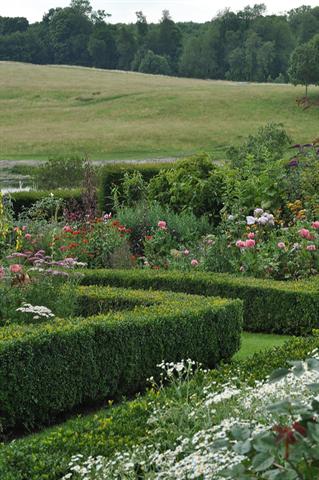Give your garden a timeless feel with inspiration from some of Europe’s most famous gardens
HEDGE YOUR BEDS
A common characteristic of formal European gardens is low to medium height box hedges in geometric shapes enclosing informal mixed planting as seen here in the Culpeper garden at Leeds Castle in the UK.
This style works well in both small and large gardens and the formal framework ensures the garden looks good even in winter when the hedges hide the bare beds or the stems of pruned roses. Suitable hedging plants for use locally include Abelia ‘Francis Mason’, Duranta ‘Sheena’s Gold’, coleonema and lavender.
INCLUDE HERBACEOUS BORDERS
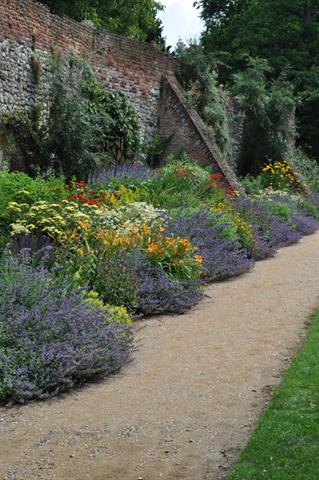
The long herbaceous border is a feature of many British gardens like this one at Eltham Palace near Greenwich. It’s a great way to soften perimeter walls and driveways.
Choose plants with colours that complement each other and place them in groups of three, five or seven, depending on their size, for more impact and repeat them at intervals to create a sense of rhythm.
CREATE A SEATING AREA
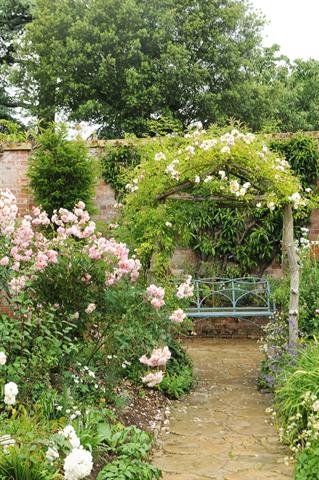
One of the features of classic gardens is the careful placement of attractive seating from which to admire the surroundings. This could be anything from a stone seat to a weathered bench.
Take this idea one step further and make your seating area a destination by placing a bench under an arbour at the end of a flower-lined pathway as has been done at Hidcote Manor in Gloucestershire, England.
DIVIDE YOUR GARDEN INTO ROOMS
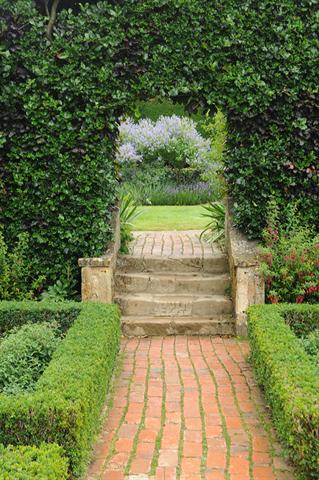
The garden of Great Dixter in East Sussex, family home of gardener and gardening writer Christopher Lloyd, comprises a number of garden rooms some of which are screened off from the next by high yew hedges as seen here. Openings in the hedges reveal glimpses of the next section of the garden encouraging visitors to explore further.
Use quick growing hedging plants such as eugenias and viburnum or divide your garden into rooms using wooden fencing, trellis or woven wattle screens over which creepers have been trained.
USE URNS AS FOCAL POINTS
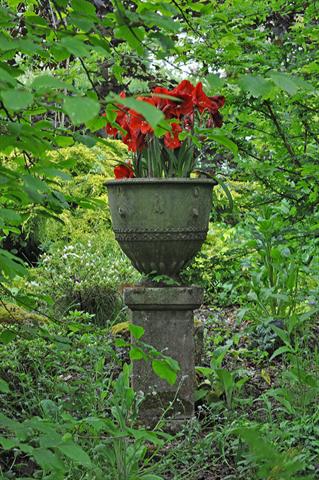
You can’t go wrong with an urn when creating a focal point at the end of a path or the centre of a courtyard. But they also work in the middle of a bed or half hidden in foliage.
Raised on a plinth, this classic urn planted with striking red amaryllis in Marle Place garden in the UK is situated in the woodland section where trees and shrubs have been trimmed to create a frame.

